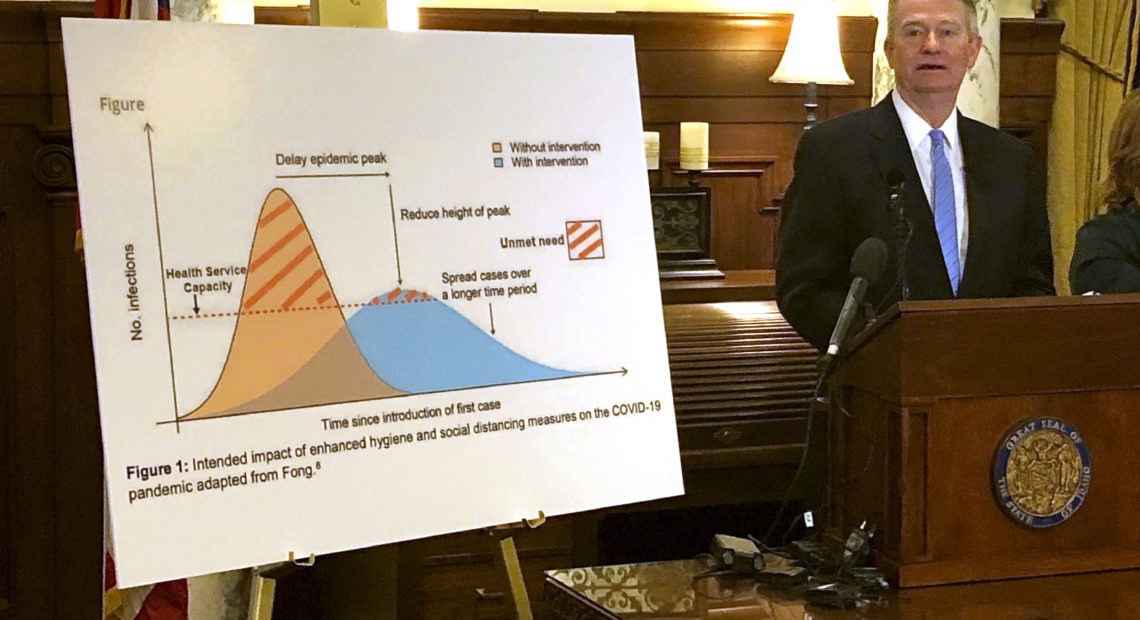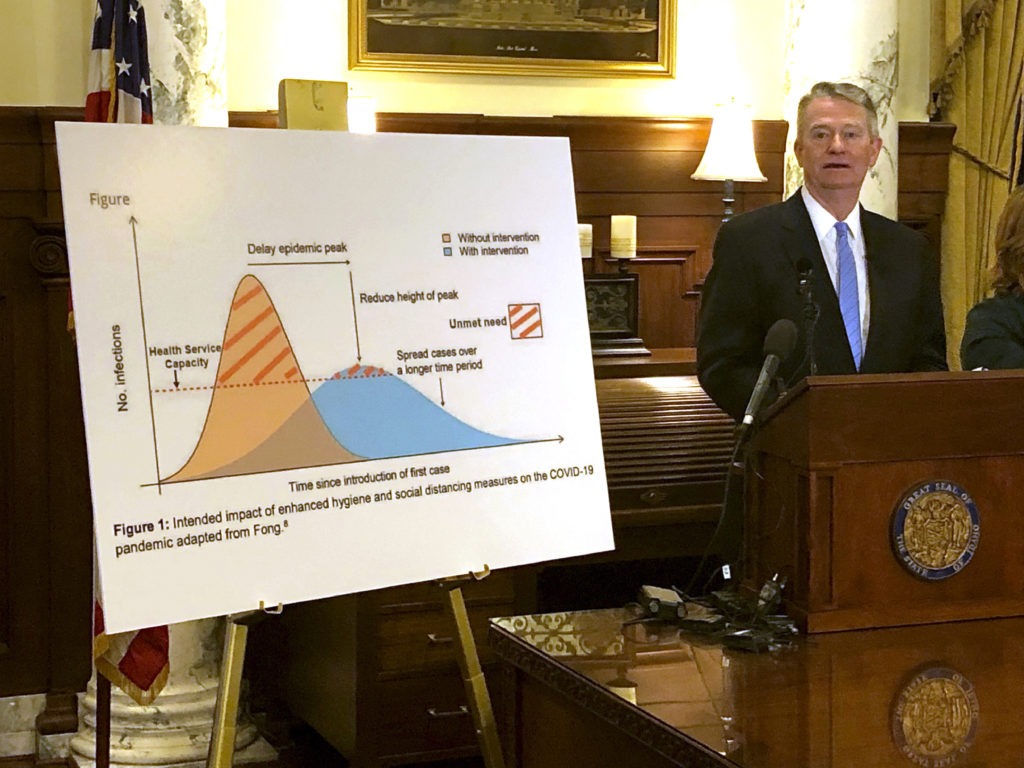
Idaho Was One Of The Last States Hit By COVID-19. Hospital Leaders Worry As Cases Surge
Idaho was the second-to-last state to announce a confirmed coronavirus case in March. Now, less than four months later, cases are rising rapidly, and the state is nearing the top of the list of the nation’s biggest hot spots.
About half of the roughly 15,000 confirmed cases in the state have come in the past two weeks and the case count has quadrupled since mid-June. That has prompted hospital leaders near the capital of Boise to sound the alarm, as they’re starting to see the spike in cases translate to increased hospital admissions.
“If we do not reverse this trend, we are headed for a crisis,” said Chris Roth, the president and CEO of St. Luke’s Health System, Idaho’s largest health-care system, during a press conference with local medical leaders last week.
With cases on the rise, hundreds of people have been showing up to get tested each day at clinics in southwest Idaho’s Treasure Valley. The demand for testing has grown so much in recent days that most without symptoms are turned away.

Idaho Gov. Brad Little speaks at a news conference in Boise on March 13. Less than four months after the state confirmed its first case of the coronavirus, it has emerged as one of the nation’s biggest hot spots.
CREDIT: Keith Ridler/AP
The percent of coronavirus tests coming back positive is up sharply, nearing 15%, according to the state’s health department. Current projections show COVID-19 hospital admissions doubling every two weeks.
“We’re on a course of seeing exponential increases,” Roth said, “and until, and unless, we change our collective behaviors, those will continue.”
Earlier this week, two intensive care units at St. Luke’s Health System hospitals near Boise filled up, and began sending patients to the main facility in Boise. The intensive care unit there is now running at about 130% of normal capacity. Respiratory therapists are being sent from a St. Luke’s hospital two hours away to help.
The outbreak has left Idaho’s major hospitals walking a fine line. They want people in the community to take the virus seriously, but they’re also careful to say they aren’t full — they can still care for all their patients.
“We are taking care of everyone who needs care today and we will continue to do that,” Roth said. “But August will be too late, and we will find ourselves in a situation where that could very well change.”
An NPR analysis shows the Boise area is among the places in the U.S. where hospitals are most likely to reach capacity due to the coronavirus. With only about 2,000 beds total, and home to the majority of Idaho’s roughly 560 new coronavirus cases a day, it has among the worst ratios of hospital beds to people who might need them. The analysis of hospital capacity data found that out of roughly 300 regions in the country, the Boise area ranked twelfth highest in terms of worst ratios of cases to number of beds.
“If we don’t take action, in terms of masking, distancing, hand washing, then, absolutely, we will be Arizona, we will be Texas — of course we will,” said Dr. David Peterman, a pediatrician and the CEO of Primary Health Medical Group, Idaho’s largest independent medical practice.
Peterman and the Boise-area hospital officials have asked Idahoans to be more vigilant about physical distancing wearing masks, and at last week’s press conference they called on public officials to issue mask mandates.
A statewide mask mandate would be most effective, Peterman said, but he knows it’s not likely for political reasons.
The state’s Republican governor, Brad Little, is leaving mask rules to local officials, including the state’s seven public health districts. Those district boards are often run by county commissioners — several of whom oppose mandates and have shared misinformation about masks.
The debate over masks has fueled tensions at public health board meetings. Angry protesters — including the far-right anti-government activist Ammon Bundy — came out to one large district meeting last week that hospital leaders were scheduled to address. The health district allowed the public to access the meeting on Zoom, but the crowd wanted to sit inside the small meeting room without wearing masks. The police were called and the meeting was postponed.
That meeting has now been cancelled twice by the health district due to safety concerns. Meanwhile, Canyon County, which neighbors Boise and is located in the district, has seen the biggest increase in cases per capita in the state over the last week.
So far, two public health districts have issued orders requiring face masks for counties, and several Idaho cities have mandated face masks on their own.
Gov. Little says face masks are a matter of personal responsibility and that mandates don’t make sense for areas where there are no positive cases. But Idaho is now down to just two counties with no coronavirus cases and rural parts of the state are seeing spikes, too.
9(MDAyOTk4OTc0MDEyNzcxNDIzMTZjM2E3Zg004))















